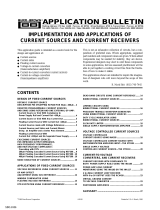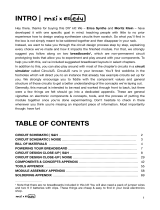
DCA55 User Guide November 2021 – Rev 14
Page 17
Collector Leakage Current
The collector current that takes place
when no base current is flowing is
referred to as Leakage Current (I
CEO
).
Most modern transistor exhibit
extremely low values of leakage
current, often less than 1μA, even for
very high collector-emitter voltages.
Older Germanium types however can
suffer from significant collector leakage
current, particular at high temperatures
(leakage current can be very temperature
dependant).
If your transistor is a Silicon type, you should expect to see a leakage current
of close to 0.000mA unless the transistor is faulty.
The minimum leakage current that the DCA55 can measure is
typically 10μA (0.010mA). For leakage currents higher than 10μA,
the measurement resolution is typically 2μA (0.002mA). The
maximum allowed leakage current for the DCA55 is 0.2mA for
silicon devices and 1.75mA for germanium devices. If the leakage
current is more than that allowed value then the DCA55 may not
detect your device correctly.
During the leakage current measurement, the base-emitter is automatically
shunted with a 910k resistor to reduce the influence of stray pick-up on an
otherwise floating base lead. Please note however that leakage current is
influenced by the base circuitry. For example, in the target application, the
collector-emitter leakage current can be reduced by having a lower value
resistance across the base-emitter.
The measured leakage current here however can be used to compare devices
of the same type.
IB = 0
Leakage current
Ic=0.170mA






















